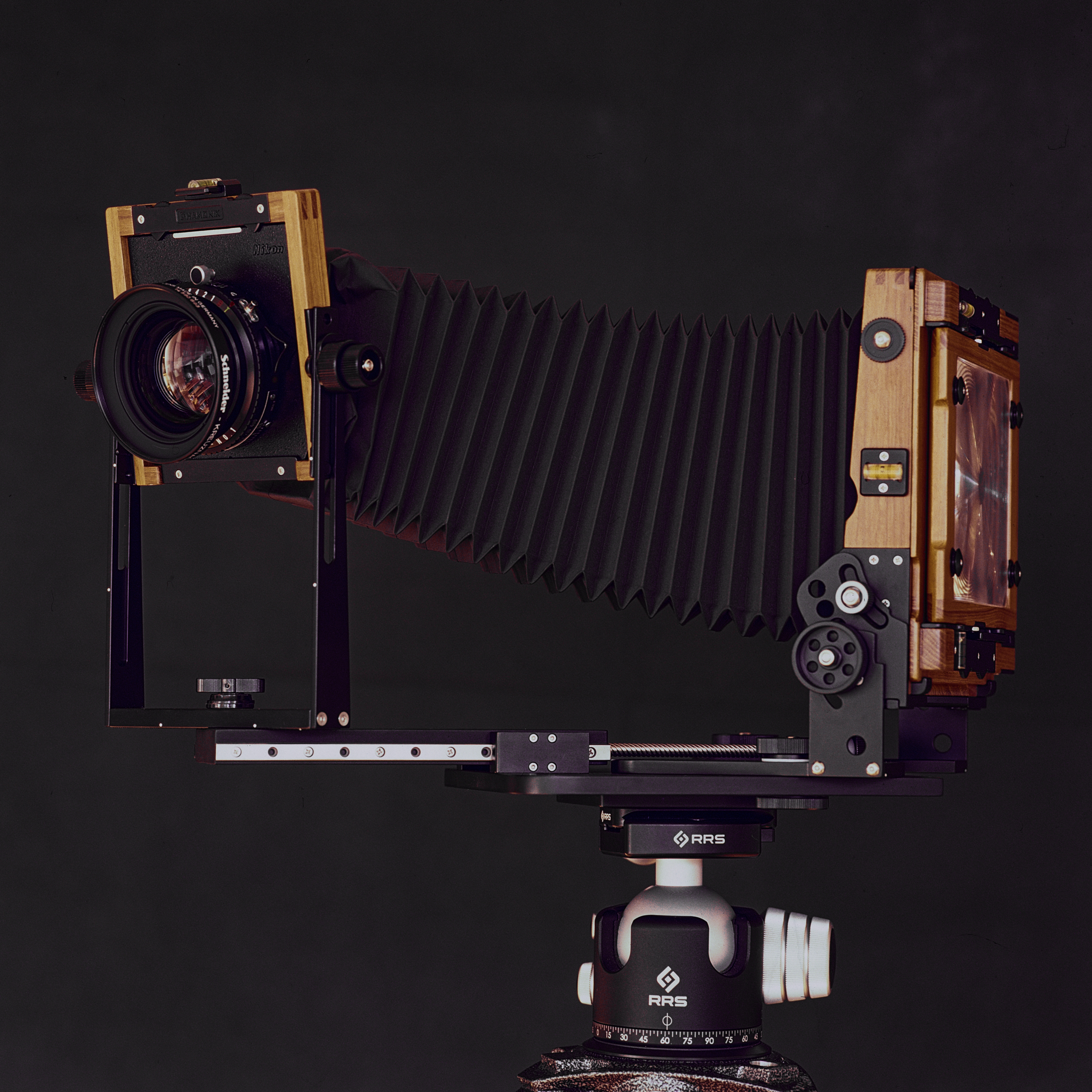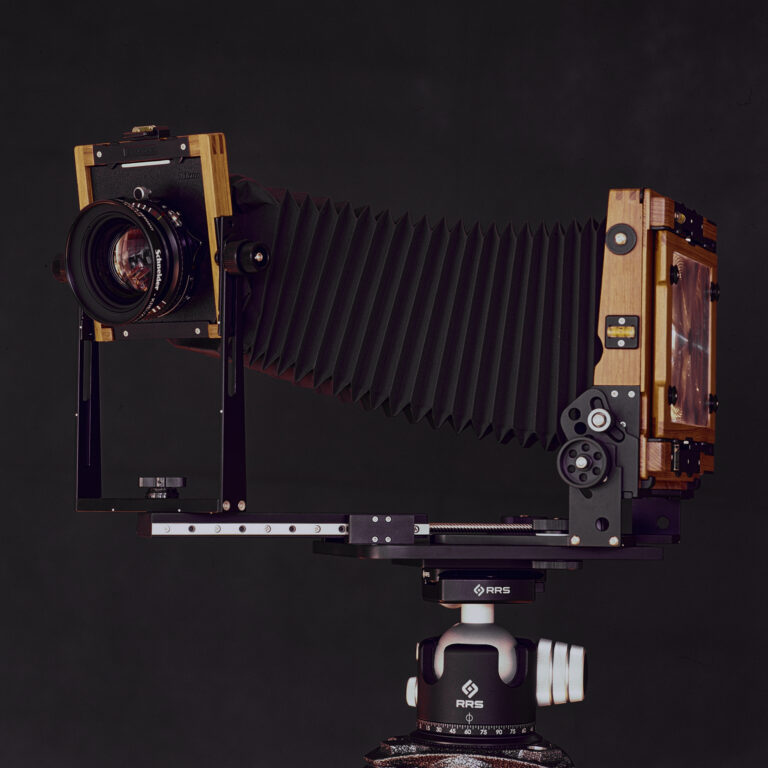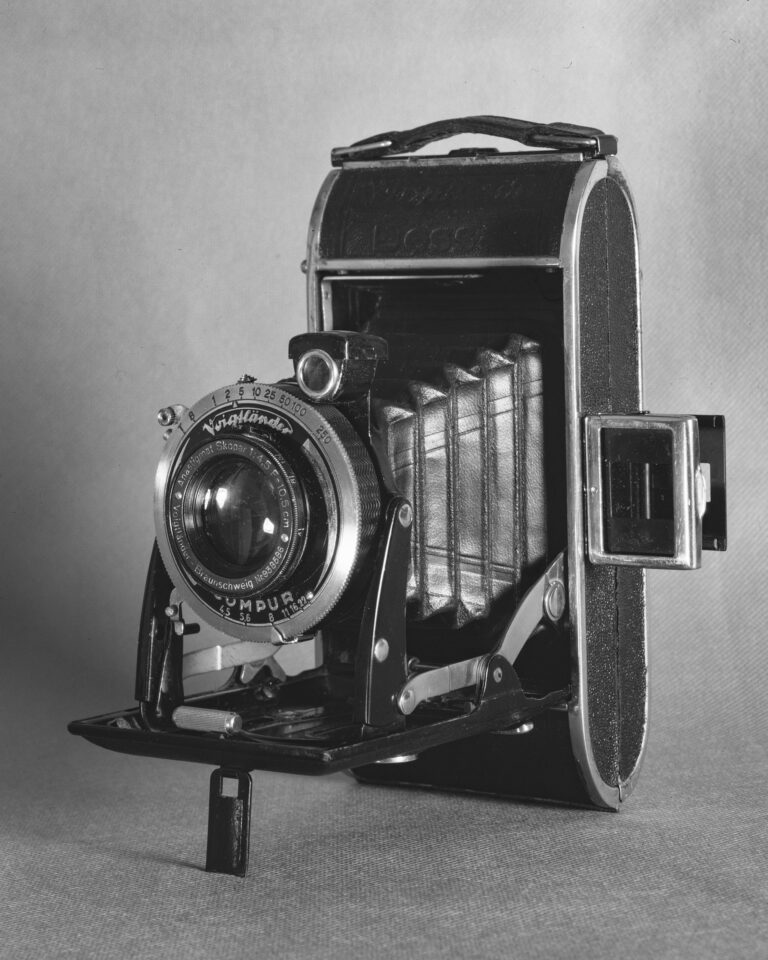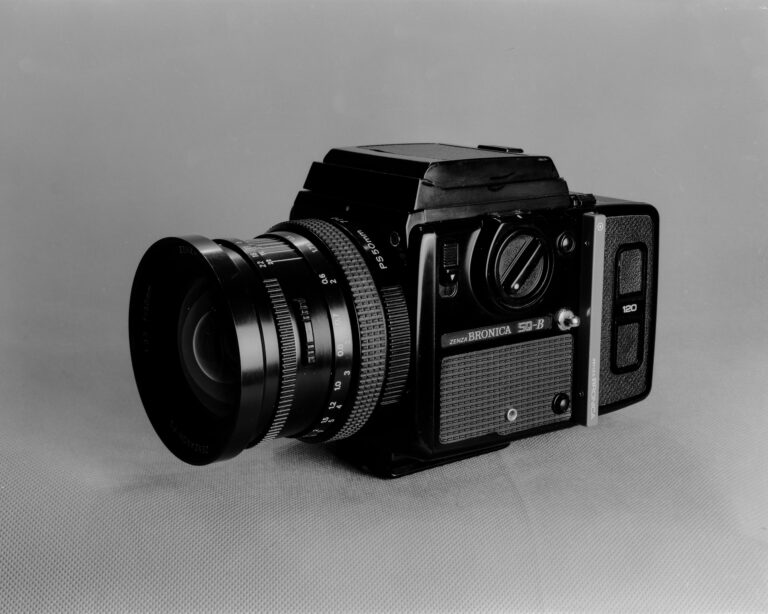This view camera is made with a beautiful combination of materials such as teak wood, carbon fiber, stainless steel, and aluminum. The design of this camera follows the concept introduced by Richard H. Phillips, which takes advantage of high-tech materials to offer precise movements, durability and light-weight combined with a hundred-year old proof classic design.
This short essay describes how the Chamonix C45F-2 ended up being my first large format camera. It is a beautifully handmade large format camera that has everything I need for architectural, still life and nature photography.
The 4×5 Project
Choosing the right camera for the purposes mentioned above was a long endeavor. I spent months studying hundreds of pages of information from books, websites, and camera specifications. To organize the information I created a long Excel spreadsheet to quantify all options I found in the market (I’m happy to provide it).
I should mention that from the beginning, I was interested in a 4×5 camera, so that I save me at least the decision on the format (5×7, 8×10). The 4×5 format is a practical for landscape photography and probably enough for my interests and budget.
Among the important decisions I had to make were: Should it be a new or a used model? What budget should I invest? Should it be an Intrepid Camera — which is a good choice for beginners — or a classic camera whose design I admire but has a stratospheric price (e.g., an Ebony, an R. H. Phillips & Sons, or an Arca Swiss). Should be a monorail hyper-precise and heavy Sinar or a new titanium-made jewel Gibellini. I figured I would have this camera for the rest of my life, and with all the options now available, I have to admit that at some point this decision was not easy for me.
Some of the sources of information I have used for learning and guiding me are provided below. I found very useful information in forums, books and blogs written by excellent, generous, and dedicated photographers. Without these sources, learning the techniques associated with this art would not have been possible.
Forums and blogs
- Forum Grossformatfotografie (in German).
- Large Format Photography Forum.
- View Camera Australia.
- Kenneth Morris’ Blog.
- Alex Burke’s Blog.
- Michael Strickland’s Blog.
- Nick Carver’s videos.
- Kerry Thalmann’s blog (Future Classics).
- Michael K. Davis’ exhaustive compilation of large format lens.
- Alex Bond’s blog.
- Chamonix instruction video (by Hass)
- Dave Parry On Landscape
Recommended books
- Ansel Adams. The Ansel Adams photographic series: 1) The Camera, 2) The Negative, 3) The Print. 2003.
- Steve Simmons. Using the View Camera. Revised edition. 2015.
- Bruce Barnbaum. The Art of Photography. A Personal Approach to Artistic Expression – Second Edition.
- Alex Burke. Large Format Film Photography, eBook.
After months of reading and learning from these sources and their numerous links, the overall picture became clear. The C45F-2 emerged as the best option considering my interests and fixed budget. On top of the excellent technical options that it offers, for example: 395 mm of bellows extension, sufficient movements in the front and rear standards, e.g., rise, fall, shift, swing and tilt; it is lightweight, foldable and has a beautiful finish.
The C45F-2 offers also an interesting feature pioneered with the Sinar P cameras called the asymmetrical tilt of the rear standard. This feature allows to focus a point of interest and then tilt it until other areas of the ground glass are in focus but without changing the sharpness of the original point.
After months of thinking I decided for the C45F-2. There is another model that was under consideration, namely the C45H-1. The later model is not foldable, does not have asymmetrical tilt, its is a bit heavier than the F-2, and has shorter bellows extension. It has some advantages, however. It has more movements than the F-2 including horizontal and vertical shift of the rear standard. After reading or watching several reviews of these two models, I concluded that, for my interests, mainly natural or landscape photography, the F-2 is the best option.
I have had this camera for two years and love it.
Technical characteristics of the C45F-2
Front standard
- Rise 45 mm
- Fall 25 mm
- Shift +/- 32 mm
- Axis tilt +/- 30º
- Swing +/- 30º
Rear standard
- Rise 0 mm
- Fall 0 mm
- Axis tilt +/- 20º
- Swing +/- 20º
- Asymmetrical tilt
Bellows
- Min 52 mm
- Max 380 mm, with extension 440 mm
Other characteristics
- Dimensions [WxHxD]: 190x170x90 mm (folded)
- Weight: 1500 g
- Lens board: Linhof type
Photo Technical Details
- Camara Bronica SQ-B
- Lens Zenzanon 150 mm
- Film: expired Ektachrom E100 VS
- Lightmeter Pentax digital spotmeter
- Developed in a Jobo tank 2520+2509
- Development N with Tetenal E6
- Scanned with Epson v850 pro
- Processed with negative lab pro
The pictures shown here were taken with a Bronica SQ-B medium format camera. I used a Kodak E100 VS expired film in 2006 to experiment a bit with reflections and see what kind of surprises this old film brings to me. Since this film is the last I have of this kind, I thought the C45F-2 deserves the privilege. The pictures exhibit color shifts and saturation of some hues. As a whole, I like the results because this uniques hues give character to this unique camera.








Esta cámara no solo hace fotos hermosas, sino que también es una obra de arte.